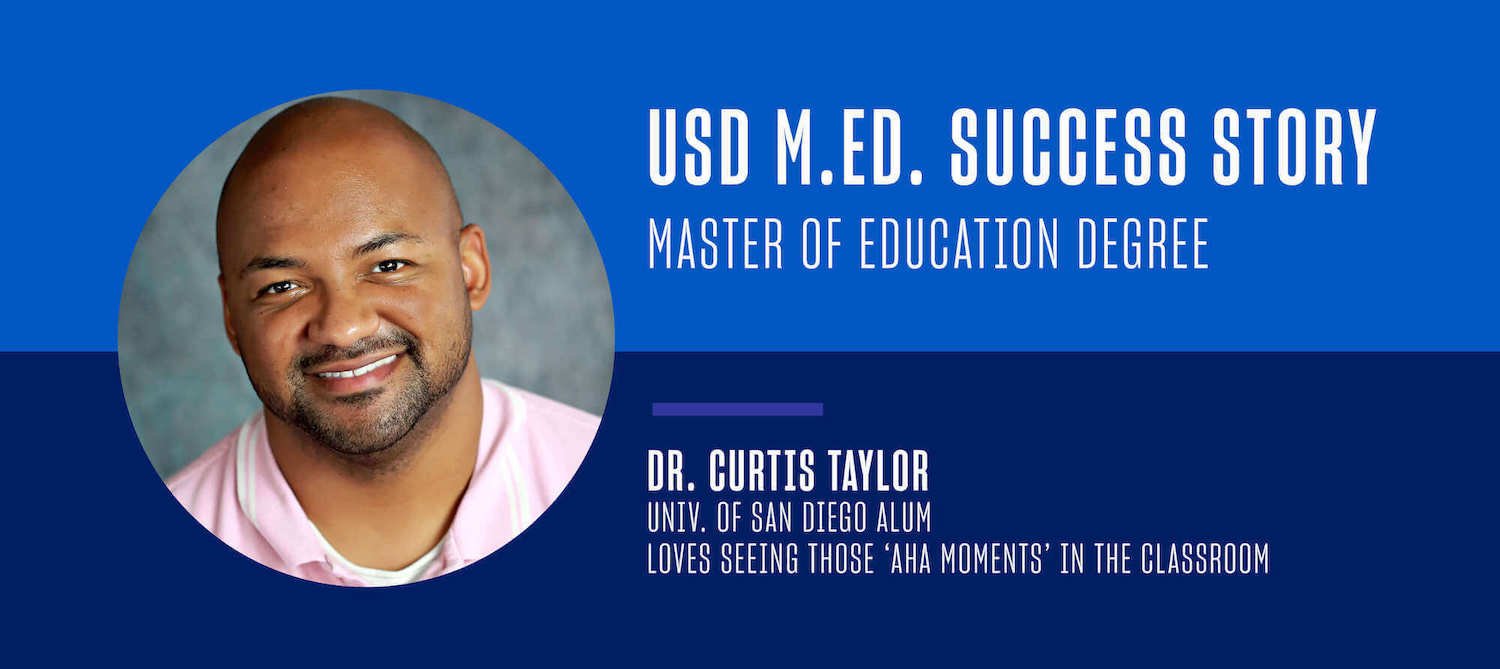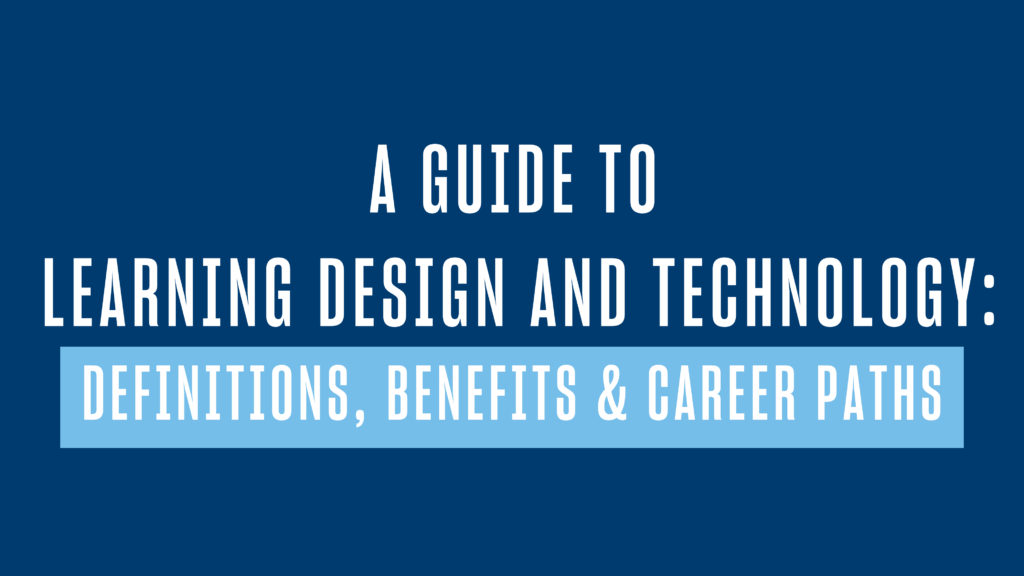Math teacher Curtis Taylor lives for those “aha moments” when he helps his students achieve a learning breakthrough. “I tell them all the time, ‘I got goosebumps’,” when he witnesses them move from confusion to understanding.
And he has put in plenty of work — continuing his own education through master’s degree and doctoral studies — to enhance his ability to help create those special moments in the classroom.
Dr. Taylor and Mr. Curtis
Professionally he is Dr. Taylor, having earned his doctor of education (Ed.D.) degree in educational leadership from the University of California San Diego and his master of education (MEd) from the University of San Diego.
In the classroom he is better known as Mr. Curtis, the friendly, smiling math teacher and mentor to his sixth-grade students at High Tech Mesa Middle (a middle school in the innovative San Diego-based High Tech High charter school group).
For the Fall 2020 school year, he begins a new educational adventure, working as an “improvement coach” at High Tech High’s Center for Research on Equity and Innovation. Part of High Tech High’s Graduate School of Education, the research center “brings together practitioners, researchers and youth to address complex problems of practice in K-12 education and create more equitable, engaging learning environments for all students.”
This connects to his passion for educational equity, and specifically math equity, the idea that socioeconomic standing, race, gender or disability can often impact the quality of education received by individual students.
Education Is ‘My Destiny’
Originally from Greenville, S.C., Taylor recalls that the importance of education was strongly emphasized in his own family. His aunt was an educator who went on to become a principal, and his mom taught pre-K before switching to a career in nursing.
In retrospect, he says, a career in education was probably “my destiny” — though not necessarily his first choice. “I wanted to be a musician at one point. I loved music; I loved playing music. And I told my mom, ‘Hey, I’m going to be a musical artist; I’m going to be famous.’ Obviously, that didn’t pan out.”
He was also interested in perhaps becoming a medical doctor. “Then I gave blood the first time and passed out and said, ‘Nope, that’s not going to work.'”
But his middle school had a job-shadowing program, and he was inspired by what he saw while shadowing an instructor from University of South Carolina Spartanburg. In high school, he recalls helping his brother with his studies, explaining, “I was curious about teaching and wanted to know more, so I joined Teacher Cadets.”
Advancing his own education to improve his skills as an educator is a recurring theme. During his undergraduate studies at Clemson, where he earned a bachelor’s in elementary education, he joined the university’s Call Me MISTER (Mentors Instructing Students Toward Effective Role Models) program, whose mission is to provide support and guidance to young men of color who want to become teachers.
“I just fell in love with teaching,” said Taylor, who taught for three years in his hometown’s public school system.
Next Stop: San Diego
When an opportunity presented itself to move to California, Taylor decided to head west with an eye toward completing his master’s degree and finding a great job. He counts himself “very fortunate” to have joined the High Tech High “family” in the fall of 2013.
Developed by a coalition of San Diego civic leaders and educators, High Tech High opened in 2000 and has since expanded to a network of 16 charter schools across four campuses serving approximately 6,350 students in grades K-12.
The charter school network is guided by four connected design principles — equity, personalization, authentic work and collaborative design — and places a strong focus on college entrance and college completion for all students.
In terms of his own lifelong education, Taylor discovered the ideal master’s degree program at the University of San Diego, which offers a 100% online program designed to help busy working teachers pursue their career goals.
“At first I was a little bit anxious or skeptical about doing an online program,” he said, but that feeling quickly dissolved. He adapted easily to USD’s robust distance learning platform and soon found himself using video chats and built-in discussion boards to “connect with teachers from across the country.”
“USD did such a wonderful job of structuring the classes” and working to “make sure that we were supported throughout.” He recalls teachers checking in to “keep me accountable” and to offer valuable feedback.
The USD MEd program offers five distinct specializations, one of which is STEAM (Science, Technology, Engineering, Arts and Mathematics). “Because my affinity was toward mathematics, I wanted to go into the STEAM field,” said Taylor, who noted that his studies at USD helped him “understand clearly how to teach mathematics and how students think about mathematics.”
He found the program to be both “fascinating” and “affordable,” and even had something of an “aha moment” of his own while reading the book “How People Learn” during one of his classes.
“I loved going to USD’s Master of Ed program,” said Taylor, a devoted teacher who seems to have a knack for seeking out rewarding educational opportunities and drawing inspiration from them.



![Preview image of What is Instructional Design? [5 Examples + Overview]](https://onlinedegrees.sandiego.edu/wp-content/uploads/2021/08/ldt_blog_whatisid-1024x576.png)
